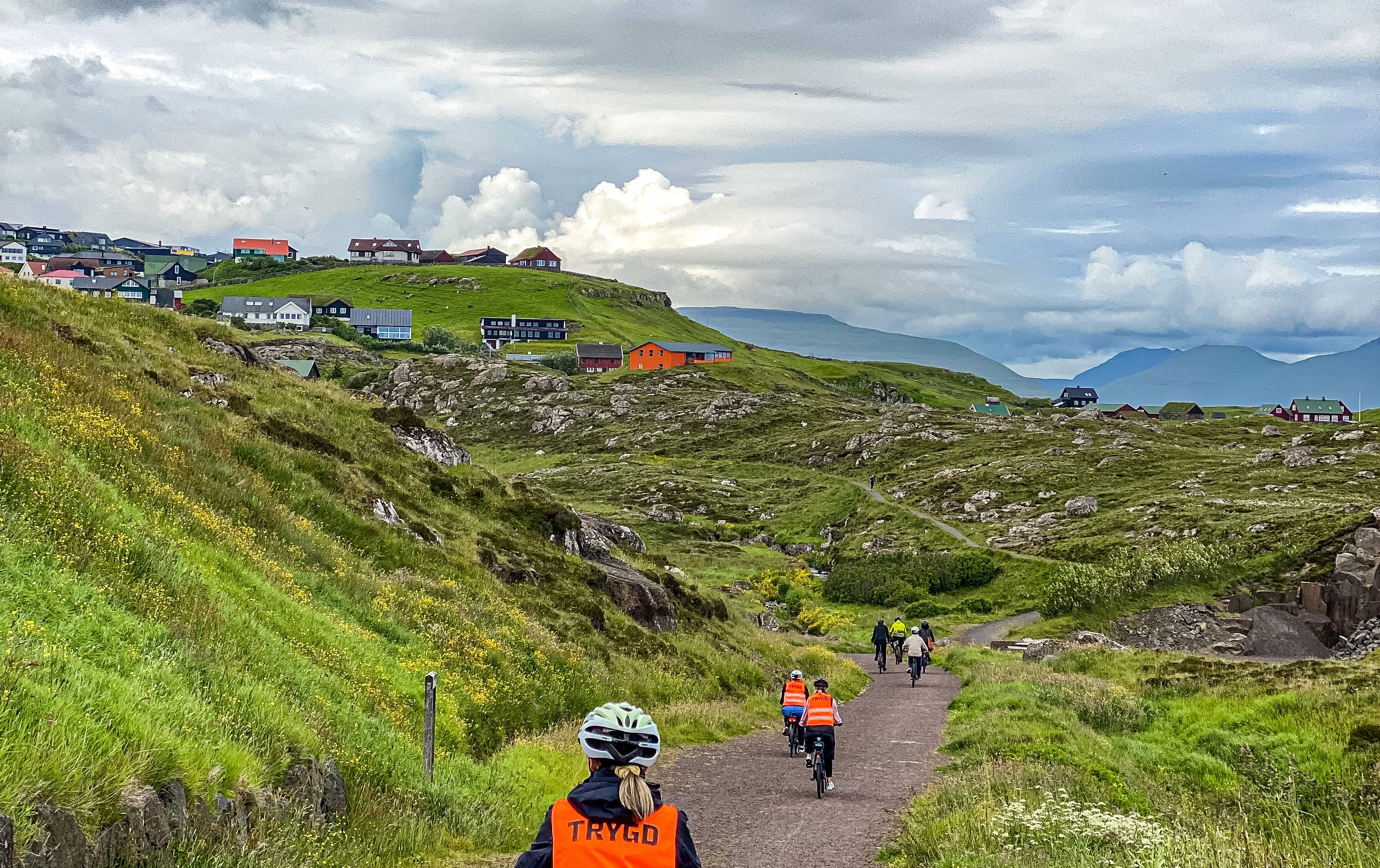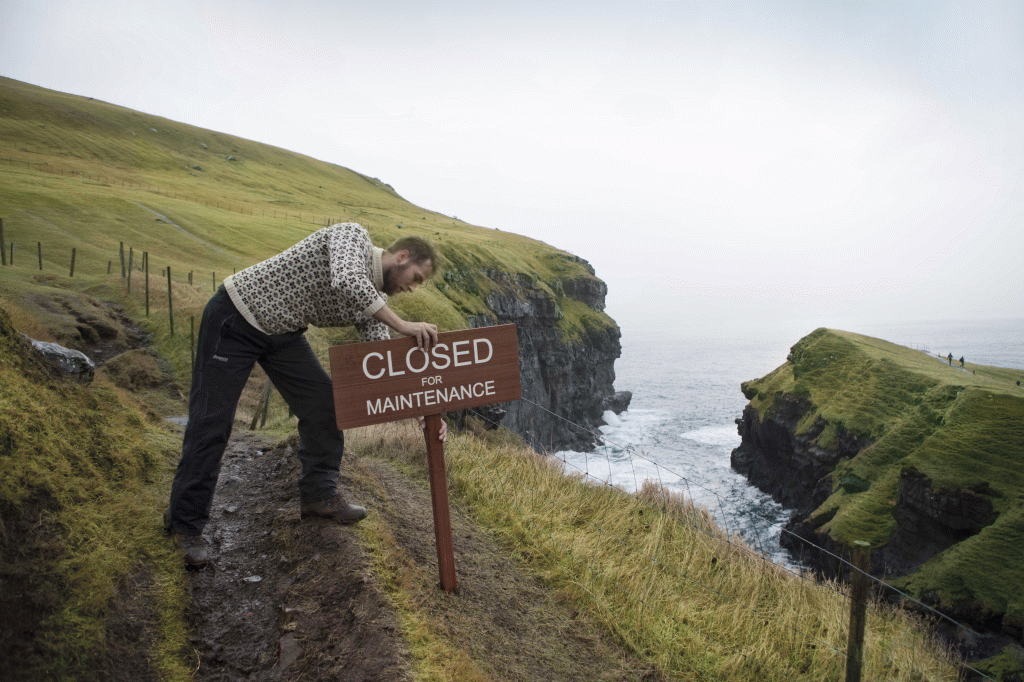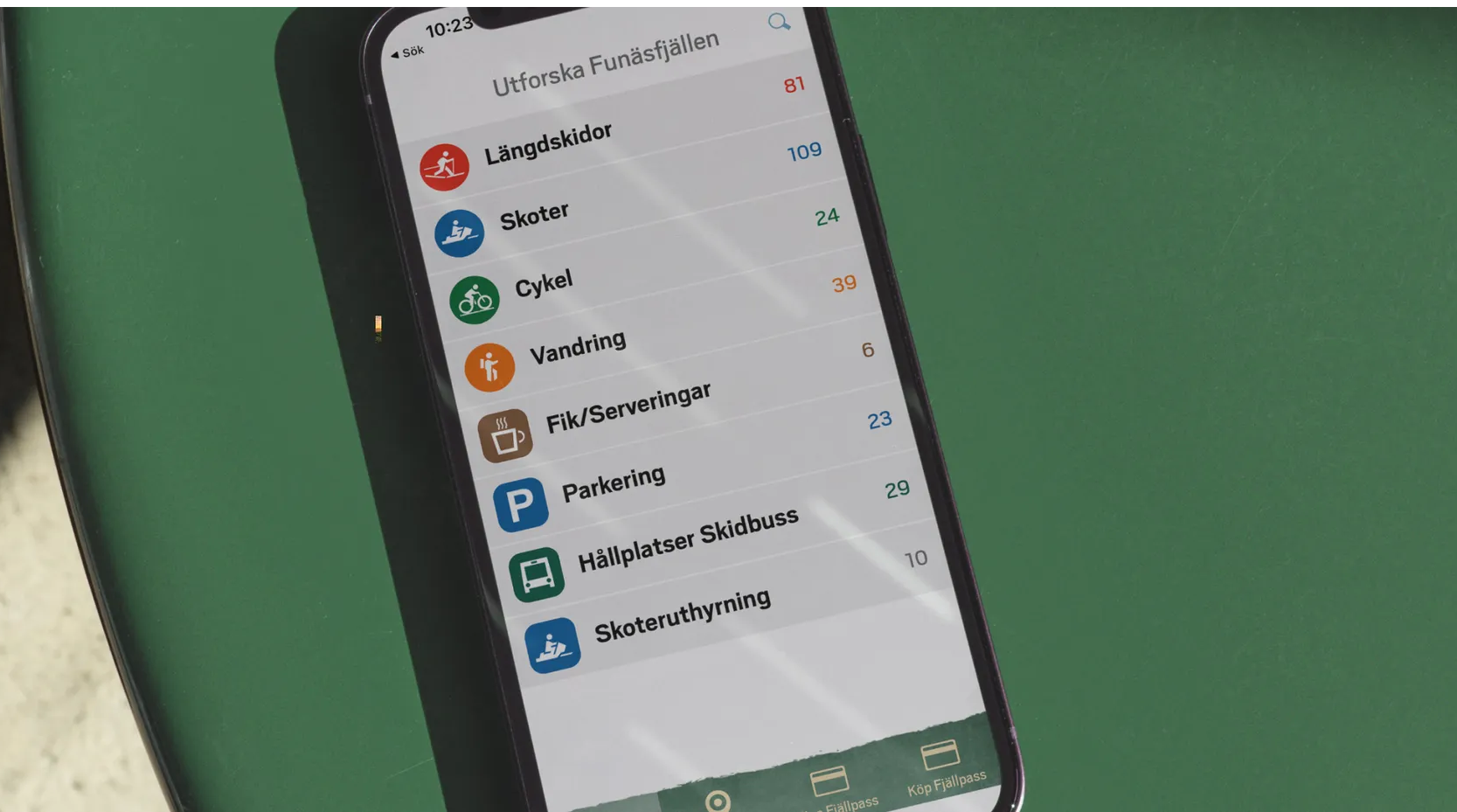Good Practices
Explore successful strategies from our project team, local entrepreneurs, and research studies.

Shared Insights
As part of the Sustainable Arctic and Peripheral Biking Tourism project, we focus on fostering collaboration and networking both transnationally and within the region. Through extensive networking, benchmarking, and research, we have gathered numerous exemplary cases showcasing how entrepreneurs and organizations are advancing biking tourism in our partner destinations. Below, you will find a selection of good practices from Donegal, the Faroe Islands, East Lapland, North Iceland, and Jämtland Härjedalen.
Good Practices
Explore and share successful strategies from our project team, local entrepreneurs, and research studies.
Donegal County Council, through funding from Transport Infrastructure Ireland and the Department of Transport, has an extensive programme of greenway infrastructure projects under development across the county at present. It plans to develop a network of high-quality greenways over the coming years, as part of the wider sustainable transport programme. This programme aims to achieve the many benefits that this type of development can bring in terms of sustainable biking tourism, climate change, economic development, health and leisure amenity, in addition to sustainable transport links to many of the county’s picturesque locations.
A greenway is a pedestrian corridor for non-motorised journeys, such as walking and biking. The greenways are developed in an integrated manner which enhances both the environment and quality of life for the surrounding area. Greenways in Donegal are planned to benefit local people in their daily travels, and to offer tourists a sustainable way to travel and experience Donegal.
Donegal County Council and its partners are committed to delivering sustainable infrastructure that will link people and places, thus enabling choice around travel options. Through the enhancement of active travel infrastructure in the North West, we hope to deliver routes that are safe, suitable and convenient for cyclists and pedestrians.
In Funäsfjällen, Sweden, a collaboration has been established between the local tourism organization and various biking entrepreneurs and companies operating in the region. This partnership aims to create a cohesive and accessible biking experience for visitors, while also supporting local businesses.
To simplify access and encourage exploration across the region, a single bike pass—called Fjällpasset Cykel—has been introduced. This pass grants access to both cross-country biking and downhill biking trails across five distinct geographical areas within Funäsfjällen. Instead of purchasing separate passes for each area, visitors can now enjoy the entire network with just one ticket. This unified approach has proven successful, leading to increased sales of bike passes and, consequently, higher revenue for local businesses.
The initiative is managed by the trail company, which oversees the maintenance and development of the biking infrastructure. Their work is supported by the ski resorts in the area, which often share resources and facilities with the biking operations during the summer season.
To enhance the biking experience and improve trail management, the region also offers a dedicated mobile application. The app is designed to help bikers choose trails that are suitable for the current season and weather conditions, thereby promoting safety and sustainability. It also helps distribute traffic more evenly across the trail network, reducing wear and tear on specific routes. Additionally, the app allows users to purchase the Fjällpasset Cykel directly from their phones, making it even more convenient for visitors to access the trails.

WHY CLOSE THE FAROE ISLANDS FOR MAINTENANCE
The Faroe Islands are one of the most beautiful tourist destinations, but the upkeep of these stunning sites requires regular maintenance. The fragile natural environment in some popular locations has recently felt the pressure of an increase in visitor numbers. These pristine places need a helping hand to ensure that they remain so.
Faroe Islands have involved volunteers in the maintenance of their tourist areas. The campaign works with municipalities and tourism offices. In this initiative, local people identify areas that need infrastructure preservation, which would enhance the path towards a sustainable future. To participate, volunteers need to sign up for the event and buy a plane ticket to the Faroe Islands. Everything else from accommodation and food to transport are included.
Since its launch in 2019, the Closed for Maintenance project has brought together dedicated volunteers worldwide to help protect and preserve the Faroe Islands’ stunning landscapes. With a shared commitment to sustainability, they have worked across multiple sites and islands, ensuring safer access to nature while mitigating the impact of human activity.
“Closed for Maintenance, Open for Voluntourism” project has had an overwhelming recognition on the global stage. With 12 Gold, 1 Silver, 2 Bronze, and three shortlisted awards from the prestigious Cannes Lions, including one in the highly competitive Sustainability category, this initiative has been celebrated as a pioneer in environmental stewardship and innovative sustainability practices.
Packaging a bike rental with an additional service creates a more compelling offer for customers. The added service, such as a guided or self-guided tour, provides a clear reason for customers to rent a bike. This added value also helps differentiate your service from competitors. Instead of simply renting a bike, customers are purchasing an experience.
Bliss Adventure, based in Pyhätunturi, Finland, organizes guided tours in Pyhä-Luosto National Park. In collaboration with the mining company Amethyst Mine, they’ve developed an innovative concept: Bliss Adventure provides e-fat bikes and guides customers on a scenic tour through the national park to the mine. At the destination, visitors can explore the mine’s interior and dig for their own amethysts to keep as souvenirs.
The mine is located in the heart of the national park and has never been subject to mechanized excavation. Access is exclusively by bike, on foot, or in winter, by skis or snow groomer taxi.
The appeal of this tour lies in its unique combination of winter biking and amethyst digging. Both companies benefit from the partnership, while customers—primarily international guests—enjoy a truly memorable and distinctive experience.
In Pyhätunturi, Finland, local entrepreneurs have taken the initiative to meet approximately twice a year to discuss the region’s biking and hiking routes. These meetings typically take place after the peak tourism seasons, providing an opportunity to reflect on visitor feedback, share observations, and exchange ideas for improving the trail network and related services.
The insights gathered during these discussions, ranging from route conditions to visitor experiences, are compiled and forwarded to the local tourism organization and municipal representatives. This ensures that the voices of those working directly with tourists are heard in broader development and planning efforts.
This collaborative group is entirely self-organized by Pyhä’s entrepreneurs. Participation is voluntary, and the number of attendees varies from meeting to meeting. There is no formal funding or external support for this initiative; it is driven purely by the shared commitment of local business owners to enhance the visitor experience and support sustainable tourism development in the area.

The Spår och Leder Funäsfjällen app is a valuable digital tool designed to enhance the tourists’ experience in the Funäsfjällen region. It provides real-time updates on trail availability, helping cyclists and other nature-goers easily identify which routes are currently open and suitable for use. Each trail listing includes key details such as difficulty level, distance, elevation, and surface type—enabling users to choose routes that match their skill level, preferences, and the prevailing weather conditions. Users can also find other useful information such as nearest parking areas and shelters.
Beyond navigation and planning, the app also serves as a convenient access point to the region’s trail network. Cyclists can purchase a bike pass directly through the app, granting them access to the extensive and well-maintained trail system. By combining up-to-date trail information with accessability, the app imporves the tourist’s experience while also contributing to the sustainable use and maintenance of the area’s outdoor infrastructure.
Learn more: Appen Spår & Leder Funäsfjällen - Funäsfjällen

Collaboration and networking is something that many people talk about but is not always translated into practical actions. In Härjedalen local entrepreneurs approached SUB project to find collaborative ways on attracting more paying guests to make the cycling experience in Härjedalen economically viable.
Initiated by two companies, the project emphasizes collaboration to create a comprehensive cycling product. Meetings were organized to bring all stakeholders together to develop a tangible package for guests. Discussions covered goals, layout, finances, content, booking, and marketing. The completed package has led to cooperation across management, booking, and PR, with ongoing collaboration expected for future success.
Finding a product that everyone supports is challenging due to varying standards and financial trust issues. However, the companies have shown impressive teamwork, leading to a stronger network among cycling companies and facilities in Härjedalen. This project exemplifies how collaboration can generate innovative ideas.

